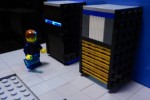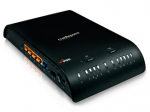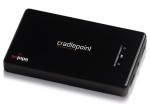After some frustration with stability and latency connecting my virtual pfSense router to my cable and DSL modems, I decided to switch to a physical box. I selected the Netgate RCC-VE 2440 as my hardware platform, since it’s the same box that pfSense themselves use as their OEM bundle. It also checks all the boxes with a dual-core Atom CPU, four Gigabit Ethernet ports, and low-power fanless design. Here’s my first impression and installation notes!
router
Datacenter History: Through the Ages in Lego
Readers of my blog know that I love computer history. Therefore, I decided to focus my entry in Juniper Networks’ “Build the Best (Lego) Data Center” contest on the history of computing. Specifically, I would re-create key historic machines to contrast them with a modern view.
Building a Combination 3G/4G/Wired Wi-Fi Network
The Tech Field Day events I run are hotspots of social media, but it has been hard building an Internet presence to keep up. Constantly on the move, I need a flexible network with scalability and failover (and fail-back) between 3G/4G and wired Internet. My latest design relies on CradlePoint’s MBR1200 “Failover Router”, which can load-balance across multiple 3G and 4G data cards.
Get a Cradlepoint PHS300 Portable 3G WiFi Router For Just $99!
I love my Cradlepoint PHS300 router. It’s been a constant companion for me for two years, providing Internet access for me and my friends at just about every conference I attend (and organize!) It’s a battery-powered box with a USB port and WiFi radio. Attach almost any 3G or 4G modem or smartphone (other than the iPhone) and you’re online and sharing. And it’s better than a MiFi: You can customize the experience, it’s faster (in my testing), and it scales to support way more users.



